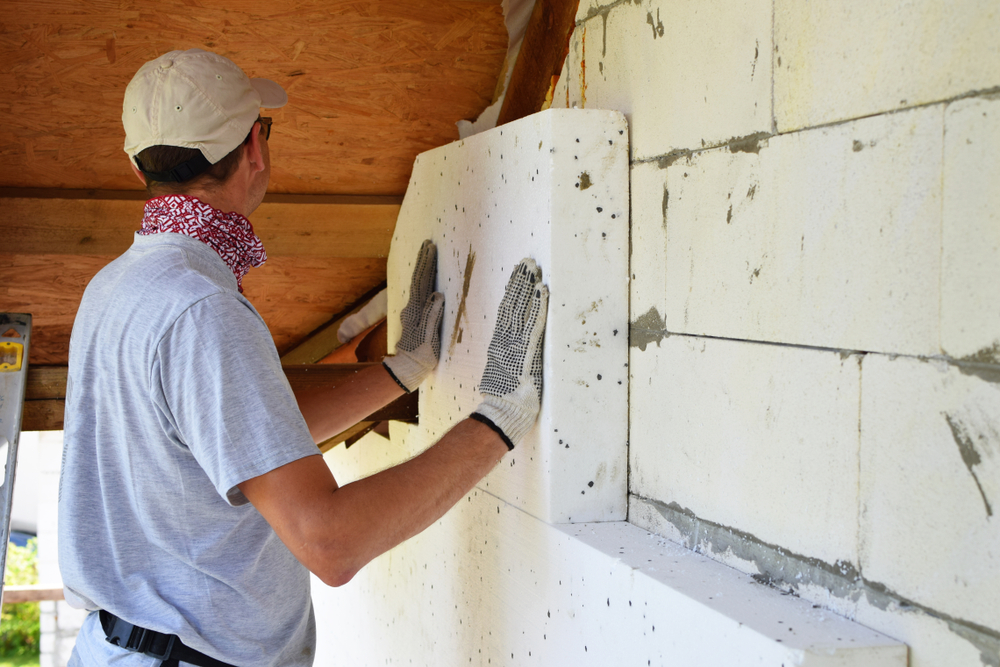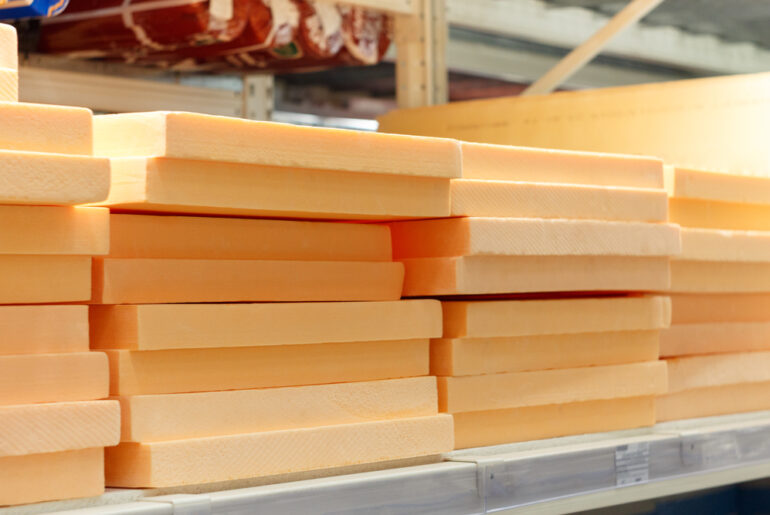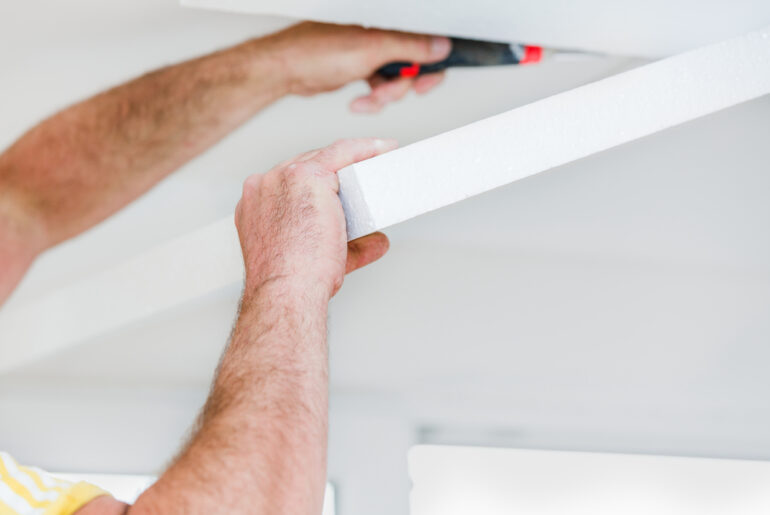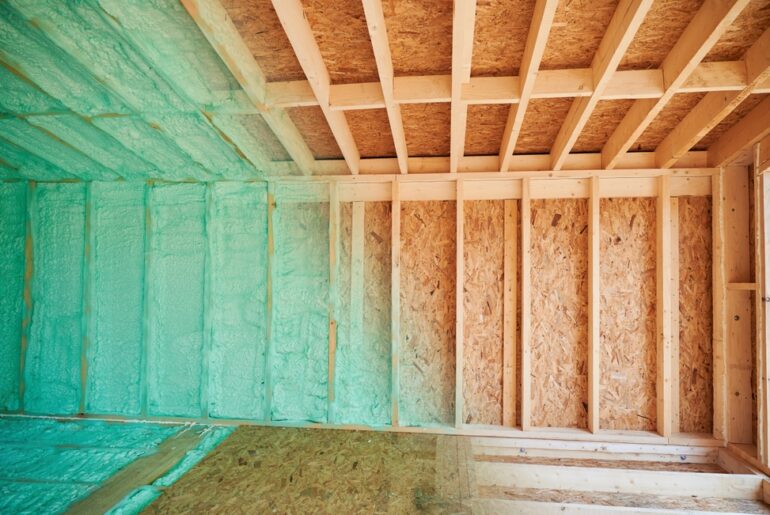Rigid foam insulation is a popular choice for many homes, as it effectively reduces heat loss and drafts. But what if you want to add a layer of insulation over the rigid foam? Can you use spray foam over rigid foam, and is it even recommended?
Spray foam is inherently a better insulator than rigid foam, so yes, you can put spray foam over rigid foam insulation. However, it’s essential to consider the pros and cons before making this decision.
The main benefit of putting spray foam over rigid foam is that it can create a better seal. Since the spray foam will fill in any gaps or cracks that may be present in the rigid foam, air infiltration is reduced. Here’s a detailed overview of applying spray foam over rigid foam.
Can You Use Spray Foam Over Rigid Foam?
Yes, you can use spray foam over rigid foam insulation. Here are some reasons you should do this.
Gaps And Cracks
Spray foam will fill in any gaps or cracks that might be present around the rigid foam, which can help reduce air infiltration. Suppose you have an older home with rigid foam insulation that has been damaged or is deteriorating. Adding a layer of spray foam over the rigid foam can help create a better seal and improve the overall insulation of the structure.
Moisture And Condensation Control
As an added bonus, spray foam can help reduce condensation or moisture accumulation inside the walls of your home. Since rigid foam insulation isn’t always airtight, it can create the ideal environment for condensation to form.
That’s where an additional layer of spray foam comes in. By creating a complete seal, it helps stop condensation from forming and keeps your home safe from mold and mildew.
Enhance Insulation
You could also use spray foam over rigid foam as a way to enhance the insulation of your home. Ideally, you should remove the underlying insulation before applying the spray foam.
However, if the rigid foam is in good condition and is well sealed, covering it with a layer of spray foam can increase the R-value of your home and provide better insulation.
Considerations When Adding Spray Foam Over Rigid Foam
Now that you know that you can use spray foam over rigid foam, there are some considerations to keep in mind.
Deteriorated Rigid Foam
If the rigid foam insulation is deteriorated or damaged, it’s essential to remove it before applying the spray foam. Otherwise, you won’t be able to create a complete seal, and the insulation won’t be as effective.
You can remove the foam by scraping it off with a putty knife or using a chemical stripper. It can also be removed by vacuuming the area and then wiping it down with a damp cloth.
If the space is dampened, let the surface dry completely before applying spray foam.
Once the deteriorated foam is removed, clean the area thoroughly before applying the spray foam insulation. It will help ensure that the seal is complete and that there are no spaces for air to escape.
Ventilation
When applying spray foam over rigid foam, it’s crucial to ensure that the area is well-ventilated. Spray foam contains chemicals that can be hazardous to your health.
Weight
If you’re using open-cell spray foam, it won’t be as heavy as its closed-cell counterpart. A combination of spray foam and rigid foam may increase the weight of your walls, so you should factor this into your decision.
Besides these factors, spray foam itself has some downsides. Ideally, it needs to be applied in conditions of at least 60 degrees Fahrenheit, or it won’t expand properly. Also, if you don’t apply the foam properly, it may not provide the insulation you need.
The good news is that spray foam does not attract mold. Plus, it does not sag over time. However, it’s pretty expensive. The total cost of installing spray foam insulation over rigid foam can get relatively high, depending on the size of the area that needs to be insulated.
Can You Combine Any Spray Foam With Any Rigid Foam Boards?
Ideally, you can combine both open and closed-cell spray foam with rigid foam boards. Both types will provide insulation and expand to fill any gaps in the wall. However, if you need better expansion, open-cell spray foam is recommended. It can expand up to three times its original size, filling any cracks or cavities in the wall.
Additionally, make sure that your spray foam and rigid foam boards are compatible with each other. There may be some chemical reactions between the two materials, so it’s best to consult with a professional before combining them.
As for the types of rigid foam boards, XPS has a higher water resistance as compared to EPS. Meanwhile, EPS is more permeable to air and water.
So, if you want to use rigid foam plus spray foam in a humid area, such as a cellar, floor, or foundation walls, you should opt for XPS boards. Likewise, XPS is denser than EPS.
So, if you want to combine it with spray foam, opt for open-cell foam since XPS itself is quite dense. If you use it under closed-cell spray foam, the combination may be too dense. If foam becomes too dense, it expels the air pockets that provide the insulation value.
On the other hand, closed-cell foam works better with EPS boards since it is much less dense. However, these boards are not as water-resistant as XPS boards, so you may also need to use an appropriate waterproofing material for better protection.
Some examples of waterproofing materials that can be used to make sure the combination of spray foam and rigid foam boards is adequately protected include latex-based paints, elastomeric coatings, or polyurethane sealants.





